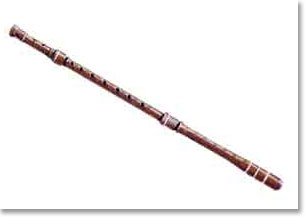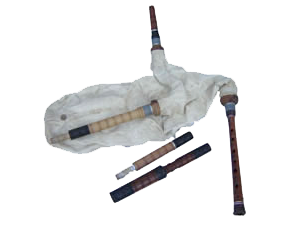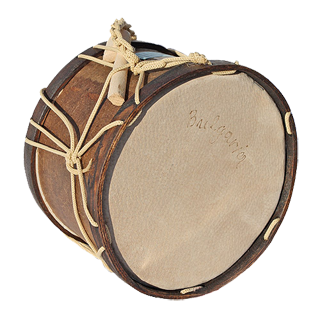
The KAVAL is one of the most popular and favorite instruments close to the life and the spirits of the Bulgarian, a close friend of the shepherd. It is found practically in all parts of this country, but it is most widespread in South Bulgaria: Thrace and in North-East Bulgaria, the Loudogorie and the Dobroudja. The technical structure of all Kavals is the same but they often vary by the length of their pipes. There are Kavals the length of pipe being 500, 640,700, 750, 800 and 860 mm and they give out different basic tones by pitch. One of the most popular Kavals is 640 mm long and with a 16 mm inner diameter. The basic tone of the pipe when the holes are closed is D of the first octave. The Kaval is an octave instrument. Its timbre generally is soft, warmer than that of the flute. In the high pitch it sounds brightly and clearly, in the medium – gently and warmly. The lower pitch of the Kaval is difficult to produce and is seldom used. It sounds thickly and with great sound density. Pair of Kavals are met in the South West Rhodope Moutain Region. They are made of two equal in size and basic tone single (unarticulated ) monolithic pipes and are kept in a special wooden “Kaval Holder”. A typical feature in the music production of this Kaval is that they are used for ensemble playing two at a time. Two performers play in one voice (in unison) and bivocally.

The GAIDA (bagpipe) has two sounding parts: the Gaidounitsa and the drone. The Gaidunitsa is the most important part of the Gaida on which the performer plays the tune, and the drone accompanies the melody with a constant buzzing sound. There are two main types of Gaidas in Bulgaria: lower (“kaba”) and high (”djura”). The low (“kaba”) Gaida is spread in the Rhodope Moutain Region and the remaining types in the remaining parts of the country.

The TAPAN (drum) has entered deeply the folk performing practice. It is most frequently used for rhythmical accompaniment. The performer beats the two membranes of the drum with a thick and a thin bats producing two rhythmical movements ( polyrhytmia ).